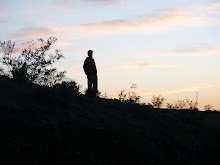This field trip was really hard, really stressful, really fun, a good use of AKP's money, full of weird juxtapositions. I'm still having trouble expressing what it was like to be at Hiroshima and Miyajima, but Italo Calvino (in Invisible Cities) says it real good.
This is what it was like to be in Hiroshima:
Cities & Memory 5
In Maurilia, the traveler is invited to visit the city and, at the same time, to examine some old post cards that show it as it used to be: the same identical square with a hen in the place of a bus station, a bandstand in the place of the overpass, two young ladies with white parasols in the place of the munitions factory. If the traveler does not wish to disappoint the inhabitants, he must praise the postcard city and prefer it to the present one, though he must be careful to contain his regret at the changes within definite limits: admitting that the magnificence and prosperity of metropolitan Maurilia, when compared to the old, provincial Maurilia, cannot compensate for a certain lost grace, which, however, can be appreciated only now in the old post cards, whereas before, when that provincial Maurilia was before one's eyes, one saw absolutely nothing graceful and would see it even less today, if Maurilia had remained unchanged; and in any case the metropolis has the added attraction that, through what it has become, one can look back with nostalgia at what it was.
Beware of saying to them that sometimes different cities follow one another on the same site and under the same name, born and dying without knowing one another, without communication among themselves. At times even the names of the inhabitants remain the same, and their voices' accent, and also the features of the faces; but the gods who live beneath names and above places have gone off without a word and outsiders have settled in their place. It is pointless to ask whether the new ones are better or worse than the old, since there is no connection between them, just as the old post cards do not depict Maurilia as it was, but a different city, which, by chance, was called Maurilia, like this one.
We went to the Genbaku Dome (the structure below where the a-bomb was dropped); we walked through the Peace Park and went to the Peace Memorial Museum; we got okonomiyaki (the most delicious food in the whole world); we listened to a hibakusha (a-bomb survivor) tell her story; we went to Miyajima.
This is what it was like to be on Miyajima:
Cities & Signs 1
You walk for days among trees and among stones. Rarely does the eye light on a thing, and then only when it has recognized that thing as the sign of another thing: a print in the sand indicates the tiger's passage; a marsh announces a vein of water; the hibiscus flower, the end of winter. All the rest is silent and interchangeable; trees and stones are only what they are.
Finally the journey leads to the city of Tamara. You penetrate it along streets thick with signboards jutting from the walls. The eye does not see things but images of things that mean other things: pincers point out the tooth-drawer's house; a tankard, the tavern; halberds, the barracks; scales, the grocer's. Statues and shields depict lions, dolphins, towers, stars: a sign that something--who knows what?--has as its sign a lion or a dolphin or a tower or a star... The wares, too, which the vendors display on their stalls are valuable not in themselves but as signs of other things: the embroidered headband stands for elegance; the gilded palanquin, power; the volumes of Averroes, learning; the ankle bracelet, voluptuousness. Your gaze scans the streets as if they were written pages: the city says everything you must think, makes you repeat her discourse, and while you believe you are visiting Tamara you are only recording the names with which she defines herself and all her parts.
However the city may really be, beneath this thick coating of signs, whatever it may contain or conceal, you leave Tamara without having discovered it. Outside, the lands stretches, empty, to the horizon; the sky opens, with speeding clouds. In the shape that chance and wind give the clouds, you are already intent on recognizing figures: a sailing ship, a hand, an elephant. . . .
We saw the famous torii at the Itsukushima Shrine; we had a room party in the hotel; we tried to escape the tourists; we went hiking on Mt. Misen and had fabulous views of the Inland Sea; we went to Daisho-in, a beautiful Buddhist temple; we came back to Kyoto.
Today I wanted to go to the Kyoto Botanical Gardens, but it's still early autumn: the leaves have yet to explode into red. So instead, Jason K. and I went hiking up Kurama-san and down into the valley town of Kibune.






